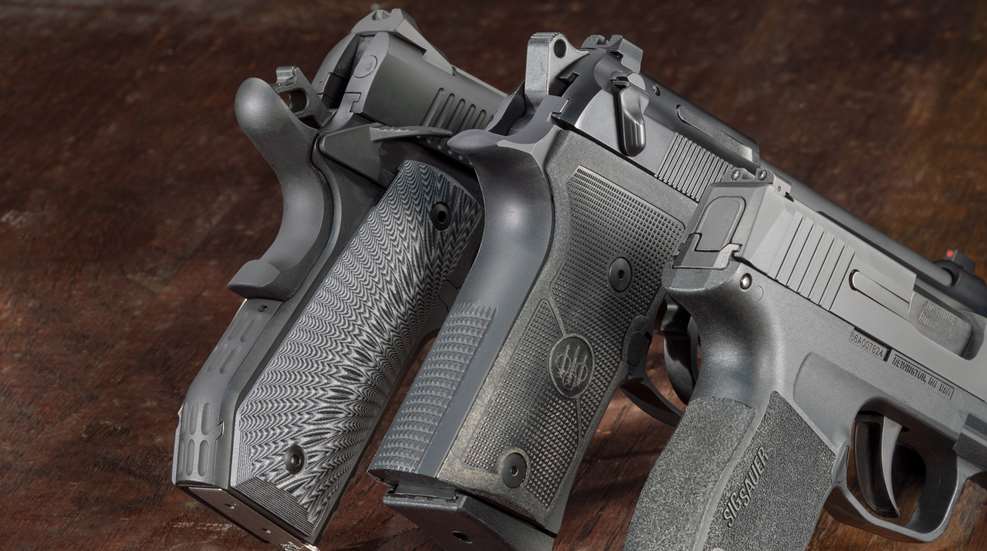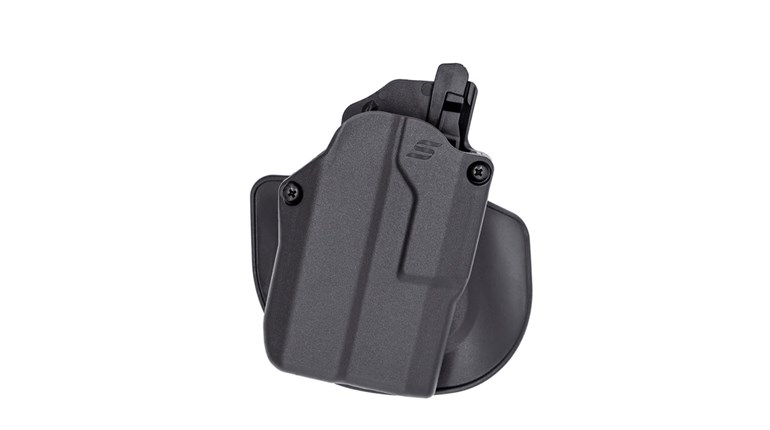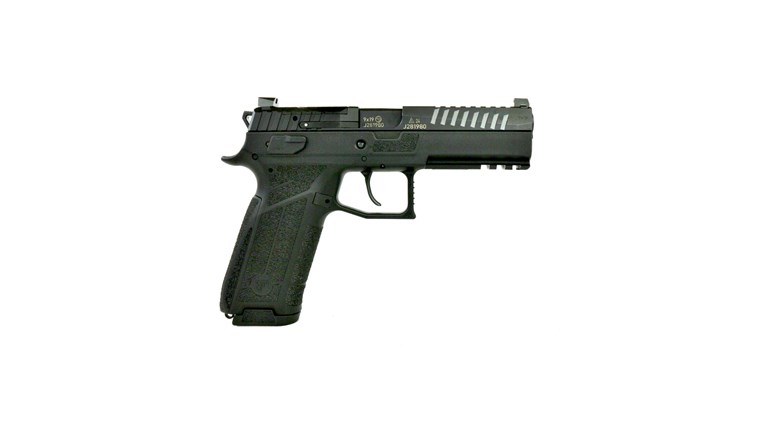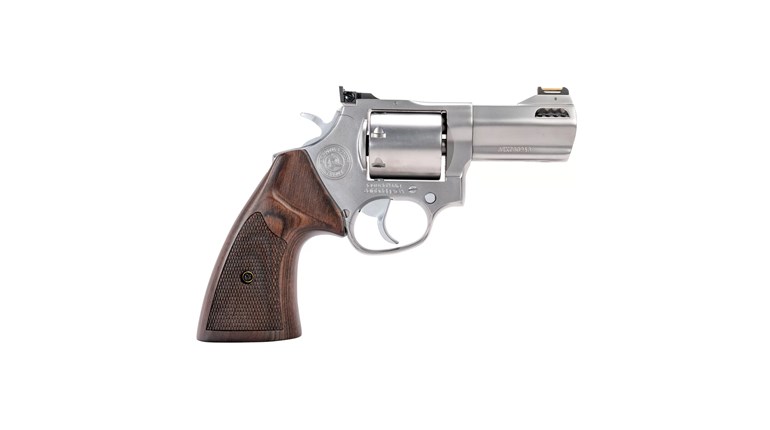
Left to right: SAO, DA/SA and DAO actions are typified here by the TISAS Bantam 1911, Beretta 92X F Compact and SIG Sauer P365.
Every fan of semi-automatic pistols seems to have a favorite type of action and can list at length the reasons why their choice is superior to all others. Oddly, very few of those same shooters seem to acknowledge the downsides of their choice, the factors that might cause others to pick a different style of lockwork to fulfill their carry-pistol needs.
Pretty much the original choice of pistol actions is the classic single action, epitomized among American shooters by classic John Moses Browning designs like the 1911 and Hi Power. Prized for a short, light trigger that makes accurate shooting easy, it’s not hard to understand its popularity.
It’s also not hard to understand why some people disdain it. For starters, some people just can’t get over the sight of that cocked hammer; it doesn’t matter how many safeties are on the pistol—thumb safeties, grip safeties, passive firing-pin safeties—that hammer is right there in plain view, all cocked back and everything and that presents an unfortunate, insurmountable psychological hurdle for them.
Those mechanical safeties are also a practical issue. To be proficient in deploying that 1911 in a life-saving emergency, the toter of “Old Slabsides” has to be 100-percent grooved-in on grasping the pistol properly to deactivate the grip safety, and know exactly at which point in the drawstroke the thumb safety gets swiped off. This all has to happen at a practically subconscious level.
Conversely, the reapplication of the thumb safety has to be just as ingrained a habit: “On the sights, off safe. Off the sights, on safe” is the mantra I use. Otherwise, that short, light trigger that’s such an asset for accurate shooting can turn into a liability for reholstering or even just safely moving about a cluttered environment with pistol in hand.
The traditional double-action/single-action pistol (or DA/SA) was intended as a remedy for this. Pioneered by Walther with its PPK and P38—and popularized here in the USA by Smith & Wesson’s Models 39 and 59—these pistols feature a longer, heavier double-action trigger pull for the first shot, and a lighter single-action pull on subsequent shots.
The DA/SA pistol will typically feature either a hammer-dropping manual safety or a decocker that will safely lower the hammer after a string of fire, rendering the pistol safe to holster.
The problem here is that the DA/SA shooter has to ingrain the use of the decocking mechanism to a subconscious level, else you wind up with the same issues as the single-action shooter: trying to reholster or move around with a cocked gun and a short, light trigger being the only thing between you and a loud, unexpected noise and unwanted bullet holes.
Unless the procedure is grooved-in to a level of automaticity, it’s not going to happen under stress. Talk to enough veteran law enforcement officers who worked during the late 1980s and early ’90s—the peak popularity of DA/SA duty pistols like the Beretta 92, Smith 4006 and SIG P229—and you’ll eventually hear stories about rolling up on the scene of an officer-involved shooting and having to tell their buddy cop that he’d accidentally holstered a cocked gun after all the excitement.
The other downside of the DA/SA was that it did, indeed, have two different trigger pulls and some people just could not get the hang of the transition from long-and-heavy to short-and-light, earning the pistols the derisive nickname “crunchentickers” from the 1911 purists of the time.
An attempt to solve that problem was the Double-Action-Only, or DAO, pistol. This eliminated the need for manual safeties or decockers entirely by giving the pistol a long, heavy, revolver-like trigger pull for every shot. In theory, this is a great idea: A simple, safe, uncomplicated interface just like a traditional double-action revolver with the magazine capacity of a semi-automatic pistol. To this day, I use an old Smith & Wesson 4046 as my bedside “bump-in-the-night” handgun. It essentially functions like a big, heavy, stainless 12-shot .40-caliber revolver. (Yeah, yeah, I wish it were a 9 mm 5946 instead, but I couldn’t pass up the price on the unloved old .40 S&W, and it was in like-new, unissued condition.)
The downside is that running a double-action trigger proficiently requires training and the willingness to put in the practice to maintain that skill, and for some people “work” really is a four-letter word.
Conventional hammer-fired pistols attempted to solve this problem with various pre-loaded double-action trigger systems like SIG Sauer’s “DAK” and H&K’s “LEM,” which retained the long trigger pull of the DAO, but lightened it up by using the cycling of the slide to actually cock the mainspring. But, these were expensive to manufacture and still had the long trigger pull to master.
In the end, as everyone knows, pretty much the entire industry settled on the striker-fired trigger, generally without a manual safety, although those are offered as an option on some striker guns.
The shorter, lighter pull required less training and practice to achieve and maintain a basic level of proficiency, and you couldn’t forget to apply the safety or operate the decocker if there aren’t any on the gun in the first place.
Of course, this removes any redundancy from the operator’s safety plan, essentially reducing it to “Don’t screw up.” So, don’t.
It’s easy to fall into a false consensus that the modern striker-fired system is the end point of semiautomatic evolution. After all, it’s by far the most common action type on the market now for self-loaders. The vast majority of issue firearms in law enforcement, as well as the newest U.S. military-issue handguns, incorporate this action system.
I carry a striker-fired pistol—an FN 509—every day, but I fully understand if someone decides they want some redundant layers of safety. If you want that thumb safety or long trigger pull, that’s absolutely a valid choice for you. Just be aware of the downsides and train to mitigate them.






































